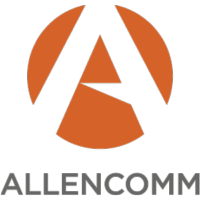Build A Better Onboarding Experience
Why do people ignore instruction manuals? Are they too lazy to read, too proud to take advice, or too impatient to get their Swedish curtain rods assembled? Or is it the fault of the manuals themselves?
It could be. The key weakness of manuals and FAQ pages is that they offer a one-size-fits-all solution. Even the most thorough manual can’t anticipate every use case or consider the background of every user. Instruction manuals have to be this way, though, since the cost of personal guidance for every buyer of a reasonably priced product would be prohibitive.
Unfortunately, it’s common for businesses to take the instruction manual approach in their employee training, especially during the onboarding experience. A key goal of employee onboarding is to start developing each individual’s potential—and the instruction manual approach is not helpful for that. What is helpful is a personalized learning approach: training that is adapted to each learner’s set of needs and level of expertise.
Web-based training, or eLearning, can be effective at delivering a personalized learning approach, even though it is designed without specific individuals in mind. An eLearning course can offer a personalized onboarding training and learning by:
- Assessing the level of expertise that a learner already has and starting with the right level of complexity
- Prompting learners to interact and personalize their own training experience
- Becoming a resource that the learner can save and use as a job aid
Benefits Of Personalized Onboarding Training
Let’s take a look at some benefits of personalized eLearning used for employee onboarding training.
It Saves Money For The Company In The Long Run
One-size-fits-all employee onboarding is inexpensive at first, but one size rarely fits all. When new employees don’t get what they need, they tend to take one or more of these actions: waste time chasing down the knowledge they need, do things wrong because they missed the key concepts, or leave because they’re frustrated.
And when a new employee leaves, it can cost well over $1000 to train their replacement. It’s far better to spend that money up front on a personalized approach that keeps them around.
It Supports Equity
One-size-fits-all training ignores differences in cultural background and variations in learning styles. It can leave behind people who have the aptitude for a job but don’t have the context to grasp certain concepts in the training. If training is personalized, gaps in knowledge are accounted for, bringing equity to the onboarding program and overall employee development process.
How To Implement Personalized Training
So, how do you implement personalized training? There are many aspects to this process—here are a few tips.
Survey Employees To Discover Their Training Needs
This can take the form of polls, interviews, or aptitude tests based on the skillsets that drive the company’s success. This tells you which topics are needed by some of your employees, which are needed by all of them, and which are needed by none.
Incorporate Assessment Quizzes Into eLearning Modules
This practice adapts individual modules to each learner. It requires a little more effort on the part of the Instructional Designer but can save the learners many hours by allowing them to skip over unnecessary content—or seek out training at a more basic level if necessary.
Establish A Library Of Training Modules
In some companies, the most important training need is for employees to get competent in a variety of simple, discrete tasks. In this case, a modular approach to training works well. When the company’s training exists as a searchable library of simple units like PDF documents, PowerPoint decks, or short videos, employees can simply pull up the task-specific training they need and ignore the rest.
Establish A Mentorship Program
Mentorship is one of the oldest methods of job training and is still extremely effective. And it doesn’t have to be expensive or time-consuming—since so many other onboarding training resources are available, it can be used as a supplemental program to steer an employee’s training in the right direction. Mentorship can benefit:
- The employee, by identifying the right content for the employee to focus on and the right approach to learning it
- The company, by discovering which training topics are most needed to develop the workforce in the right direction
Personalizing your employee onboarding training doesn’t need to be a major overhaul—try a few of these tips and see if you notice results. But for the best possible result, a custom eLearning solution designed by training development experts might be the right way to go.


